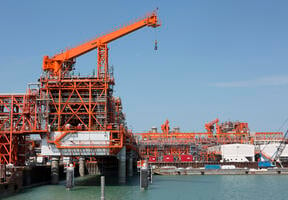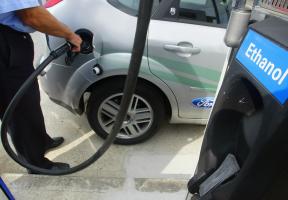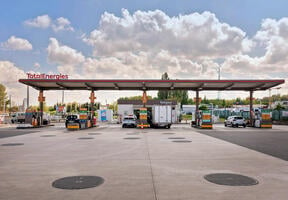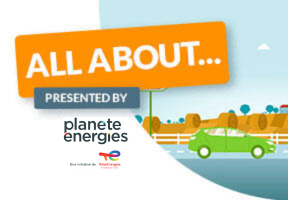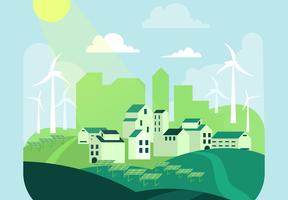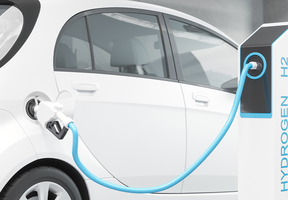Cleaner motor vehicles: the energy challenges involved
5 min read
Road transportation is increasing globally, and the number of vehicles worldwide is projected to double over the next 30 years. Carmakers and energy companies have been working for many years to make road transportation less dependent on petroleum products.

© AFP PHOTO / PHILIPPE DESMAZES - Trajets quotidiens, week-ends, vacances : la voiture individuelle reste une aspiration pour de nombreux citoyens.
A few key figures illustrate the significant challenges involved in transportation: there are 1.2 billion cars, vans and pickup trucks on the road worldwide, a figure that is projected to double over the next 30 years. In emerging markets, the number of vehicles in use is forecast to quadruple by 2030. A massive 97% of global road transportation is carried out by vehicles that run on petroleum-based fuels, such as , gasoline and LPG. And today, 50% of the world’s supply is used for transportation, compared with one-third in 1973.
A Much-Needed Transition To Green Mobility
This remarkable growth primarily reflects a legitimate desire among people in many countries to own a motor vehicle. While the United States has 800 vehicles per 1,000 people, and France, 600, China – which became the world’s largest car manufacturer in 2011 – has 110 and India, 32. Demand in both countries is growing at a fast, steady pace. The development of international trade, particularly in Europe, has also spurred an increase in goods transportation by road. Vehicles powered by gasoline and diesel will continue to dominate the market for the foreseeable future; they are inexpensive and reliable, and the fuel distribution infrastructure is already well developed.
Action therefore needs to be taken to:
- Reduce reliance on crude oil, which – even if significant reserves are still available – is a finite resource whose price is expected to increase over the long term;
- Limit carbon emissions, which are widely recognized as contributing to . Transportation accounts for one-third of total carbon emissions in the European Union, even though it is one of the regions leading the fight against climate change.
China has set the ambitious target of making electric cars account for 25% of annual automotive sales by 2025. And Europe aims for one-third of new vehicles to be powered by by 2030.
More Energy-Efficient Electric And ICE Vehicles To Maintain Performance, Safety And Price
The success of this transition depends first and foremost on developing vehicles that are less reliant on fossil fuels. That means improving the engines and fuels currently in use and developing alternative technologies, such as electric powertrains, to reduce consumption by 30% to 40%.
In addition, these improvements need to be achieved without lowering engine performance or vehicle comfort, compromising safety or making the price of the vehicle prohibitive.
The fuel consumption of internal combustion engine (ICE) vehicles, which run on conventional fuels, has already been reduced dramatically, with some small, series-produced models using just over 4 liters per 100 kilometers. Hybridization, where an internal combustion engine is combined with an electric motor, is the best way to reduce fuel consumption even further, to around 2 liters per 100 kilometers. All-electric powertrains, on the other hand, are already being used in small vehicles and are particularly suited to urban and suburban driving. At the same time, the diversification of automotive fuels has picked up pace, with the addition of and the use of natural gas.
The Slow Process Of Transitioning To Cleaner Motor Vehicles
Regardless of the type of engine or technological innovation, change is slow in the automotive industry in general, for several reasons:
- Motor vehicles have a relatively long useful life – around ten years in Europe and at least 15 years in Africa – and only a small percentage are replaced each year;
- Car manufacturing is a highly competitive and very capital-intensive mass-production industry. It is therefore vital that production lines are depreciated over time, and changing models is expensive for the manufacturer. It also takes several years for a new prototype to be ready for commercial-scale production;
- Vehicle use demands a significant amount of infrastructure, including fuel distribution networks. The introduction of electric vehicles, for example, requires the installation of an extensive network of charging stations, as well as significant power generation capacity and a distribution network organization that matches the new needs associated with electric powertrains;
- For many people, using a car is a habit. Consumer needs are influenced by where we live and work and the public transportation options available to us. And consumers themselves see cars not only as a “clean”, cost-effective way to get around, but also as an object of desire or a status symbol. There is nonetheless growing interest in new car-sharing and ride-sharing systems.

